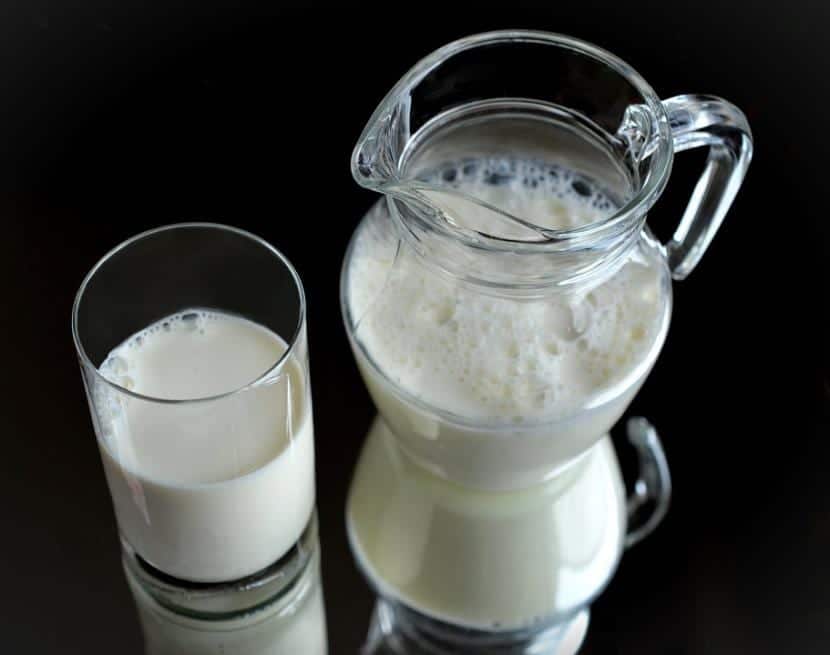
Image - Wikimedia / Ies
La Euphorbia trigona It is a spectacular shrub or tree that we can include in our low-maintenance garden, but also if we grow it in -large- pots it will be easy for us to have a very well decorated corner.
As if that were not enough, it is interesting that you know that withstands drought; not in vain, he has no other choice coming from a place where rainfall is scarce 🙂.
Origin and characteristics

Image - Wikimedia / David J. Stang
Known as the African milk tree, milk tree, or cathedral cactus (although it is not a cactus), It is a small tree that reaches a height of about 4-5 meters native to southeastern Africa, specifically from the Graboon River. Its crown is densely branched, with quadrangular stems about 4 to 6 cm thick, mottled green or reddish in the variety. Euphorbia trigona 'Rubra'.
It does not usually have leaves, except for a few at the top of each stem. These are spatulate, 3 to 5cm long, green or reddish. The flowers bloom in spring-summer, and are greenish yellow.
What are their cares?

Image - Flickr / cultivar413
Would you like to have a copy? If so, take our advice into account and you will see how beautiful it gets 🙂:
Location
La Euphorbia trigona is a plant that, if the climate is warm and without frost, it must be grown all year round outside, in full sun. But yes, if they had it in a greenhouse or a little sheltered, you have to get used to it little by little and gradually to the sun's rays since otherwise it would burn.
On the other hand, if you have an interior patio with windows through which a lot of sunlight passes, or a very well lit room (with natural light), it can grow well there too.
Earth
It depends on where you are going to grow it:
- Garden: the soil has to have very good drainage, so much so that it is best to make a 1m x 1m planting hole and fill it with pumice (for sale here), river sand previously washed, or with a 50% mix of universal growing medium (for sale here) with perlite (for sale here).
- Flower pot: fill with any of the substrates mentioned above.
Irrigation

Image - Flickr / Hafiz Issadeen
Rather little. It must be watered only when the soil or substrate is dry. When you water, add all the water that is necessary so that it is well soaked; For example, if it is in a pot, the water must come out through the drainage holes, and above all it is very important that it penetrates the substrate and does not go to the sides (if this happens, take the pot and put it in a basin with the precious liquid for about thirty minutes.
Use rainwater or lime-free preferably. If you can't get it and the one you have is too hard, fill a bucket with it and let it sit overnight. The next day, you can use the one that is more towards the upper half of said container.
During winter the frequency has to be even more rare. Every 10, 15 or even 20 days. If there is forecast of frosts or rains, the irrigations can be more spacious.
Subscriber
During the warm months of the year It is highly recommended to fertilize with a specific fertilizer for cacti and other succulents (on sale here) following the indications specified on the package, or with blue nitrophoska by adding one or two small tablespoons (of those of coffee) every 15 days. In this way, you will have a very good growth rate and, most importantly, you will be in good health.
Planting or transplanting time
In spring, when the risk of frost has passed. In case of having it in a pot, move to a larger one -with holes- when roots grow out of the drainage holes or every 2-3 years.
Multiplication
The milk tree produces seeds, but they are so rare in cultivation that the only effective way to multiply it is by stem cuttings taken in spring. You have to let the wound dry for a week in a place protected from direct sun, and then plant it in a pot with vermiculite for example.
For a better chance of success, you can impregnate the base with homemade rooting agents. This way it will emit its own roots in 10-14 days or so.
Pruning
Not recommended. It is a plant that, like all Euphorbia, contains latex, which is a substance that causes itching and stinging when it comes into contact with the skin. But also, if the plant loses a lot, it weakens and loses beauty.
Plagues and diseases
For the latex that we have said above, it is a very resistant plant. The only problem you may have is caused by overwatering, when opportunistic fungi would attack the roots. Hence it is necessary to control the frequency with which we water.

Rusticity
Resists cold, but not frost. The minimum temperature should not drop below 8ºC, but if it drops to 0 degrees it would suffer damage but not irreversible, as it would if it drops to -1ºC or less.

What did you think of Euphorbia trigona?
I have one and this information was very useful to me because I have used it for a long time to take good care of it?
Brilliant. We hope you can continue enjoying it 🙂